Interpreting and Regulating Heritage for the Future – Joggins Fossil Cliffs, Nova Scotia
Case study prepared by Sharon Trac, Carleton University
Keywords: World Heritage, Fossils, Nova Scotia, Interpretation, Regulation, Environmental Sustainability, Community egagement
LESSONS LEARNED
The Joggins Fossil Cliffs site exemplifies the evolution of terrestrial life on earth and its biodiversity. The new interpretation centre that opened in 2007, promotes education as well as sustainability, including through its LEED Gold certified building, which incorporated features that reduce its impact on the environment. Its purpose is to exhibit the site’s natural and cultural heritage in ways beyond showcasing artifacts. It offers comprehensive educational programs targeted at visitors to raise awareness for the protection and preservation of the site. Education is a very powerful tool in the conservation field. It helps to inform the public on environmental issues and ways to properly manage them.
Community involvement takes on a significant and crucial role in raising awareness, continuing the conservation discourse, and localizing environmental issues. The conservation of Joggins Fossil Cliffs was begun by residents of the Joggins community even before the UNESCO nomination. Don Reid, John Calder, Mark and Jenna Boon are amongst the local residents who worked to make the site known, protected and eventually designated as a World Heritage Site. Their roles are further described in the Stakholder section below. These individuals from Joggins are just a handful of many community members that took the initiative to educate themselves, each other, and passersby on the site. The collective participation and collaboration of the local Joggins residents sets out a model for all members of the community to take action in the conservation of their natural and built environment. The UNESCO nomination would not have been possible without their support, so it is important to emphasize the significant role that a modern citizen can play.
The case study also highlights the wide range of regulations that are involved in protecting the site at municipal and provincial levels.
Presentation
This slide deck was presented in class on November 25, 2021 as a preliminary summary of the case study documentation and analysis.
DESCRIPTION
Joggins Fossil Cliffs is a site located on the eastern shore of Nova Scotia in the upper region of the Bay of Fundy. It consists of a shore of grey, red, and brown cliffs that stretch 14.7 kilometers with towering heights over 30 metres (Joggins Fossil Cliffs). The cliffs were formed during the last ice age that occurred 10,500 years ago which covered majority of Canada in a thick sheet of ice (Joggins Fossil Cliffs). When the ice began to melt, the weight of the solid that once sat on top of the land caused an upwards reaction from the land thus forming the tall cliffs seen today on the site (Joggins Fossil Cliffs). In addition to this, the constant force of the extremely powerful and high tides of the Bay of Fundy give the cliffs their unique look. The tides in this region are some of the highest ever recorded in the entire world, many areas of the site may often be engulfed by the water during periods of high tide which cause the cliffs to naturally erode exposing even more fossils.
Joggin Fossil Cliffs is known for its abundance of paleontological evidence dating to the Carboniferous period, also known as the Coal Age, that took place between 290 and 360 million years ago (Canadian Register of Historic Places). Its outstanding fossils include some of the Earth’s very first reptiles, dinosaurs, birds and mammals of which 195 species have been discovered (Canadian Register of Historic Places). In addition to findings of animal remains and traces, fossilized trees from the Coal Age have also been revealed (Canadian Register of Historic Places). The site is associated with famous scientists such as Sir Charles Lyell, Sir William Dawson, and Charles Darwin who made the many first discoveries here such as the discovery of the first reptile, the Hylonomus lyelli, that roamed the Earth 315 million years ago (Falcon-Lang & Calder 141). In 1989, the site was officially recognized by the province of Nova Scotia as a Special Place under the Special Places Protection Act, and in 2008, after years of preparation for a nomination submission, the United Nations Education, Scientific and Cultural Organization (UNESCO) finally inscribed Joggins Fossil Cliffs on their World Heritage List (Canadian Register of Historic Places). Additionally, the site is protected by the Beaches Act and Regulations (1989), Mineral Resources Act (1990), and the Secondary Municipal Planning Strategy and Land Use Bylaw for the Joggins Planning Area in accordance with the Municipal Government Act. Today the site still operates as a paleontological site with a new, more recent addition of an interpretation centre that welcomes its visitors to learn about its rich natural and cultural heritage. The interpretation centre called the Joggins Visitor Centre was designed by WHW Architects Inc. using sustainable, innovative design practices and green strategies that emulate the form of the cliffs.
Stakeholders
Organizations
- Joggins Fossil Institution (JFI): JFI was founded in 2010 and is a not-for-profit charity organization. Their purpose is to ensure conservation of the Joggins Fossil Cliffs property and its artifacts. This organization works towards promoting education through the interpretation centre on site through various methods such as through exhibits, guided tours, research and educational programs, etc.
- Cumberland Regional Economic Development Association (CREDA)
- Municipality of the County of Cumberland (MCC)
- The Bay of Fundy Ecosystem Partnership (BoFEP)
- Government of Nova Scotia: Nova Scotia Department of Tourism, Culture and Heritage (DTCH); Nova Scotia Department of Natural Resources (DNR)
Owners/users
- Mi’kmaq peoples
- Local residents and Community Groups: In the 1980s, Don Reid, a local resident that worked at a coal-mine, had a hobby of collecting fossils which led to the opening of his “Joggins Fossil Shop” to display his large fossil collection (Kosters & Grey 14). His passion for fossils inspired many other community members to educate and engulf themselves in the natural wonders of the cliffs. A mural was eventually commissioned by the community that depicts Reid on the cliffs to commemorate his dedication and knowledge to the conservation of Joggins Fossil Cliffs (Kosters & Grey 14). Another notable Joggins citizen is John Calder, a geologist who grew up in the nearby community. His involvement included informing the community of the last coal mine closure in 1980 and aiding in the UNESCO nomination document submission for World Heritage Status (Kosters & Grey 15). Father and daughter, Mark and Jenna Boon, were also heavily involved in the UNESCO nomination from 2004 to 2007. Mark Boon eventually become the first executive director of Joggins Fossil Institute (Kosters & Grey 15).
- Visitors/travellers
Consultants for the Interpretation Centre
- Architect and Landscape Team – WHW Architect Inc. Lead Architect – Ron Burdock
- Structural – BMR Structural Engineering
- Mechanical/Electrical – F.C. O’Neill Scriven & Associates
- Civil – ABL Environmental
- Contractor – Pomerleau
- Interpretive Design – Design + Communication
- Archaeologist – Davis Archaeological Consultants
- Business & Operational Planning – A.L. Arbic/Genesis Consulting
- Costing – Hanscomb Limited
- Environmental – Strum Environmental
Timeline
- 290-360 million years ago: Carboniferous period (“Coal Age”)
- 17th century: Coal mining begins
- 1852: Dawson discovers Hylonomus lyelli – earliest reptile
- 19th century: Discoveries of fossilized reptiles, dinosaurs, birds, mammals, and trees
- 19th century: Quarrying of sandstones
- 1970: Historical Objects Protections Act
- 1980: Closure of last coal mine (Joggins-River Herbert)
- 1989: Special Places Protection Act (SPPA)
- 1989: Beaches Act and Regulations
- 1990: Minerals Resources Act
- 1999: Joggins World Heritage Steering Committee formed by CREDA
- 2004-2007: Nomination Project
- 2006: The Municipality of the County of Cumberland Society: Secondary Planning Strategy and Land Use Bylaw for the Joggins Planning Area (through the Municipal Government Act (2006))
- 2007: Nomination Submission to UNESCO
- May 2008: Joggins Fossil Centre opens
- July 7, 2008: Inscribed on UNESCO World Heritage Sites List
Awards
- 2007: Joggins Fossil Institute (JFI) awarded Excellence in Collaboration at Nova Scotia’s Department of Economic Development’s Celebrating Communities conference
- 2007: Joggins Fossil Centre receives Lieutenant Governor’s Award for Architecture – Medal of Excellence by the Nova Scotia Association of Architects
- 2010: Joggins Fossil Centre awarded with Green Apple International Built Environment Award
- LEED® Gold Certified
Heritage
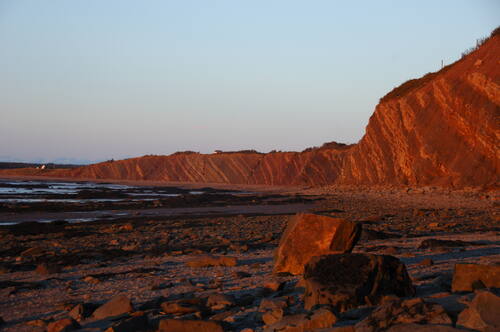
Natural Heritage: Joggins Fossil Cliffs is valued for its best and most complete fossil record of terrestrial life during the Coal Age. Among the 195 fossil species found here, the very first reptiles such as the Hylonomus lyelli, 95 plant species, 187 plant microfossils, 68 horizons of upright fossilized trees, fossil forests, and 100 species of animals have been unveiled in situ in their natural environments (Nomination of The Joggins Fossil Cliffs for the Inscription on the World Heritage List 20-59). Additionally, three ecosystems have been discovered: the Floodplain Rainforest, Estuarine Bay, and Fire Prone Forested Alluvial Plain with Freshwater Pods (Canadian Register of Historic Places). These ecosystems reveal a range of species exposing an entire food chain that has been hidden from the human eye for millions of years. The geological specimens are also an important natural aspect of the site. The sedimentary beds found here are the thickest found anywhere in the world from the Carboniferous period measuring 4,442 metres in thickness (Nomination of the Joggins Fossil Cliffs for the Inscription on the World Heritage List 27). Within these sedimentary beds also lays the thickest coal basins from this era which led to active coal mining in this region for centuries. Joggins Fossil Cliffs is an incredible site that reveals the evolution of terrestrial life on Earth and its biodiversity. Due to the nature of its constantly eroding cliffs, more fossils are being uncovered naturally and adds to the growing collection of specimens.
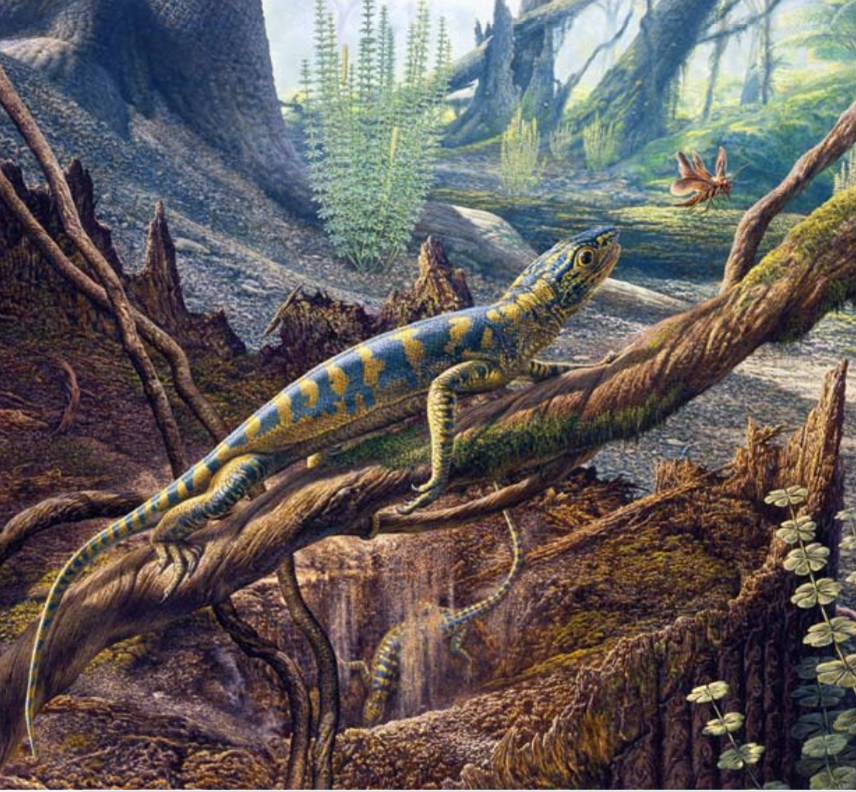
Cultural Heritage: Prior to European colonization, Canada was already inhabited by Indigenous groups with their own systems of governance, trade, and way of life. The Joggins community located in the Cumberland County of Nova Scotia, are in the ancestral and unceded lands of the Mi’kmaq peoples (Kosters & Grey 13). The present name of the region “Joggins”, is believed to be derived from the Mi’kmaq word “Chegoggin” which translates to the “place of fishing weirs” (Nomination of The Joggins Fossil Cliffs for the Inscription on the World Heritage List 38). It is important to recognize that these traditional lands of the Mi’kmaq peoples have never been ceded by treaty, so acknowledgement of their presence and actively involving them in community and land-based projects is essential to preserving the rich cultural heritage of the First Nations group. Additionally, their Indigenous ways of life, knowledge, and connection to the land is highly useful in heritage conservation and sustainable practices of everyday life. When the first scientists arrived on the site of Joggins Fossil Cliffs in the 1800s, the Mi’kmaq people were the ones to show them how to live off the land (Joggins Fossil Cliffs), and to this day there is a lot that conservationists, scientists, and regular citizens can learn from them.
Many of the discoveries on the site were discovered by famous and renowned scientists such as Sir Charles Lyell, Sir William Dawson and Charles Darwin. Lyell, who is credited as the founder of modern geology, first stepped foot onto Joggins Fossil Cliffs in 1842 to study the fossilized erect trees, he writes in a letter to his sister on July 30 of that year exclaiming his excitement and fascination of his new discoveries:
“My dear Marianne, — We have just returned from an expedition… whither I went to see a forest of fossil coal-trees — the most wonderful phenomenon perhaps that I have seen.”
Nomination of The Joggins Fossil Cliffs for the Inscription on the World Heritage List, p. 40
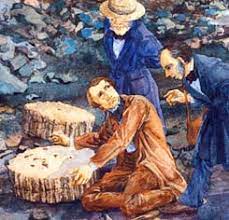
On Lyell’s second trip to the site in 1852, he brought along with him Sir William Dawson. During their trip they uncovered fossils of reptiles preserved in standing trees, millipedes, and early land snails (Nomination of The Joggins Fossil Cliffs for the Inscription on the World Heritage List 41). Among their many discoveries and trips, in 1859 Dawson found the fossils belonging to the Hylonomus lyelli, which is the earliest known reptile that lived 315 million years ago, and named it after his colleague Lyell (Nomination of The Joggins Fossil Cliffs for the Inscription on the World Heritage List 44). The discovery of this animal is a great achievement for Canada, in 1992 images of the reptile were featured in postal stamps in Canada and since 2002 it has been designated as a provincial fossil of the province of Nova Scotia under the Provincial Fossil Act (Falcon-Lang & Calder 139). Though Charles Darwin never visited the site himself, his colleagues Lyell and Dawson would report back to him with their findings and Darwin would write and publish about their discoveries which led to increasing growth of interest in the site and the scientific field in general. One of Darwin’s most famous publications is On the Origins of Species published in 1859 which records the complete fossil record of Joggins and includes his infamous theory of evolution by natural selection, this piece of scientific literature is considered to be the foundation to modern studies in evolution (Nomination of The Joggins Fossil Cliffs for the Inscription on the World Heritage List 40).
Aside from the fossils, the cliffs was heavily involved in the coal-mining history in this region which contributed to the Industrial Revolution. The coal mines operated as early as the 18th century until 1980 when the last coal mine closed due to exhausted coal deposits (Kosters & Grey 14). Additionally, for a short period of time the site was used for grindstone quarrying that contributed to the economic development of the Joggins region in the 19th century (Nomination of The Joggins Fossil Cliffs for the Inscription on the World Heritage List 52).

Sustainability
Environmental sustainability – Joggins Fossil Interpretation Centre: An interpretation centre is a centre where knowledge and communication of a particular natural or cultural heritage site is shared with its visitors usually through a form of a museum or exhibition-type site to enhance the understanding of the heritage of the site. WHW Architects Inc. designed the single-story building with various spaces for offices, laboratories, exhibit rooms, a gift shop, and a café (Canadian Architect). Its exterior is a characterized by angular surfaces, sandstone cladding, and wood siding that mimic the cliffs (Canadian Architect). This building utilizes green strategies in its design to reduce its energy consumption and overall be more environmentally sustainable. It does in ways such as incorporation modern technologies such as a 50-kilowatt wind turbine generator, solar heating system, green roof, polystyrene insulation, air source heat pump, cistern for grey water reuse, passive solar heat and light collector, rainwater collector, and solar hot water collector (O’Neill, Scriven & Associated Limited). Additionally, many of the materials used for the construction of the building are locally sourced or recycled such as the local brown Wallace sandstone or local wood used on the façade (Architecture49). The amenities of the building also make efforts to be more environmentally sustainable such as in the washrooms that use rainwater from the collector to flush the toilets and water the plants and in the café where all the produce is locally sources which ultimately reduces greenhouse gas emissions from transportation to the site (O’Neill, Scriven & Associated Limited). The interpretation centre is a Leadership in Energy and Environmental Design (LEED®) Gold Certified building making it the first in the province and was awarded the Lieutenant Governor’s Award for Architecture – Medal of Excellence in 2007 and the Green Apple International Built Environment Award in 2010 (Architecture49).
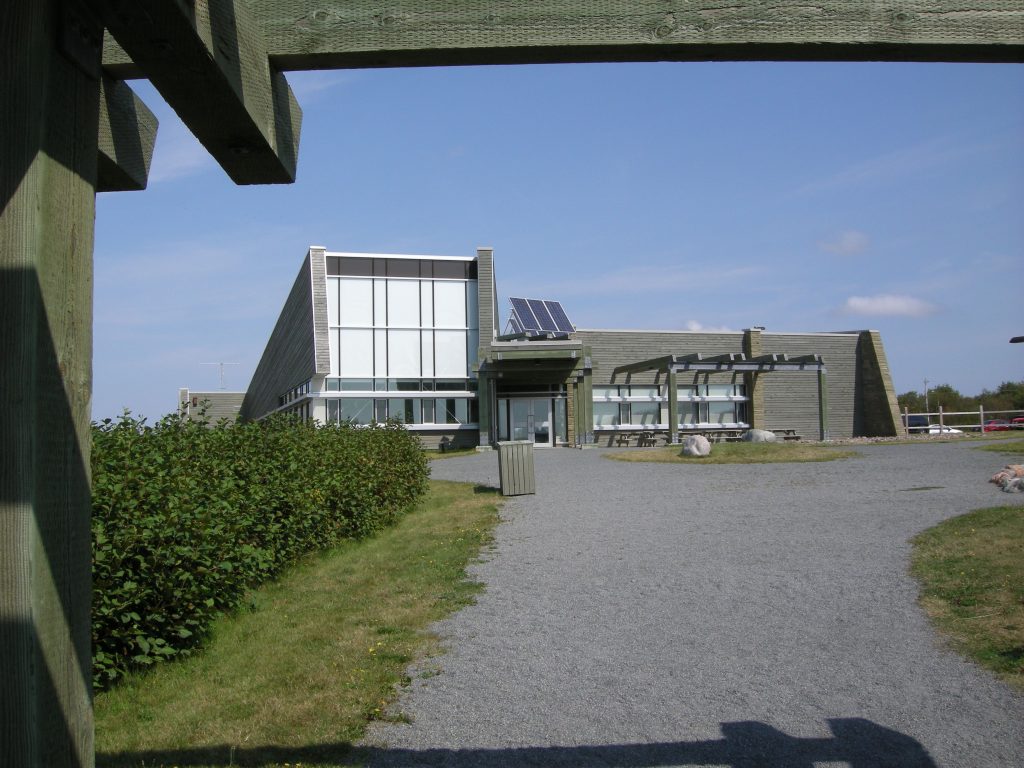
Environmental sustainability – designated World Heritage Site: The designated property is protected through a series of acts, policies, planning strategies and bylaws to restrict future development, control environmental effects inflicted by human activity, and protect the natural environment and artifacts of the site. Buffer zones established through the Municipality of the County of Cumberland Secondary Planning Strategy and Land Use Bylaw for the Joggins Planning Area (2006) through the Municipal Government Act (1998), Beaches Act and Regulations (1990), and Mineral Resource Act (1990) have contributed to managing the natural environment and ensure its preservation for the current and future generations. Furthermore, the Special Places Protection Act (1989) works cohesively with the other acts to protect the natural heritage objects such as the fossils on the site. Additionally. in 2008, after years of formulation for a nomination document to submit to UNESCO, Joggins Fossil Cliffs was officially inscribed on their World Heritage Sites list. This designation protects the site on an international level, drawing attention to the site’s rich natural and cultural heritage and in return asks its visitors to reflect on how to conserve natural sites like this one for the future.
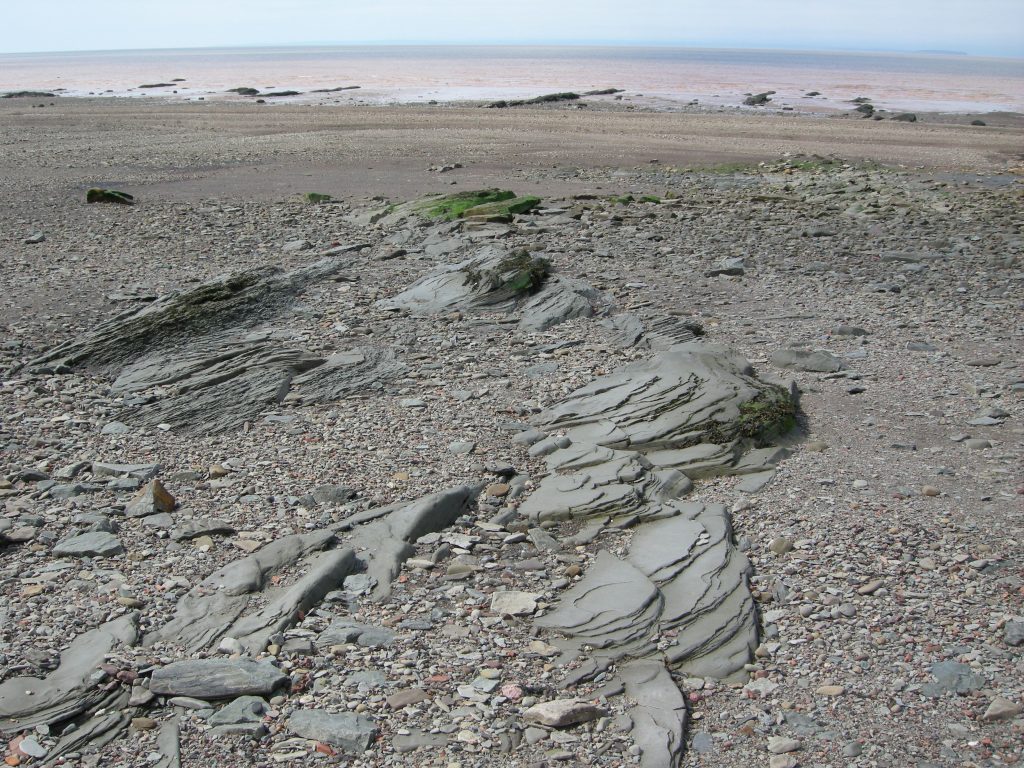
Socio-cultural Sustainability: The interpretation centre’s primary goal is to promote education. This is done so through exhibits, guided tours, research, and educational programs, and more. They also offer presentations, talks, and in-house programmes to actively educate the public on how to properly conserve the natural site. The Green Crow Gift Shop in the building purchases works from local artists and artisans which shows support for small businesses in the region and keeping the economic revenue within the local community. Similarly, all produce used for the café come from Atlantic Canada and Canadian fisheries (Joggins Fossil Cliffs).
Economic Sustainability: Since the opening of the Joggins Interpretation Centre in 2007, the site has received thousands of visitors annually from their regular ticket sales and group tours. Based on their 2020-2021 Annual Report, they received approximately 7,500 visitors even amidst the COVID-19 pandemic. It was also reported that in that same timeframe there was a revenue of $237,100 (Joggins Fossil Institute 24). The interpretation centre has attracted visitors from within the province, the nation, and worldwide which helps to develop tourism in Nova Scotia. The site is economically sustainable because its steady flow of income from tourism is executed in a way that does not exploit the natural resources of the site. For example, purchasing from local business and local farms and fisheries keeps the profits within the province or nation.
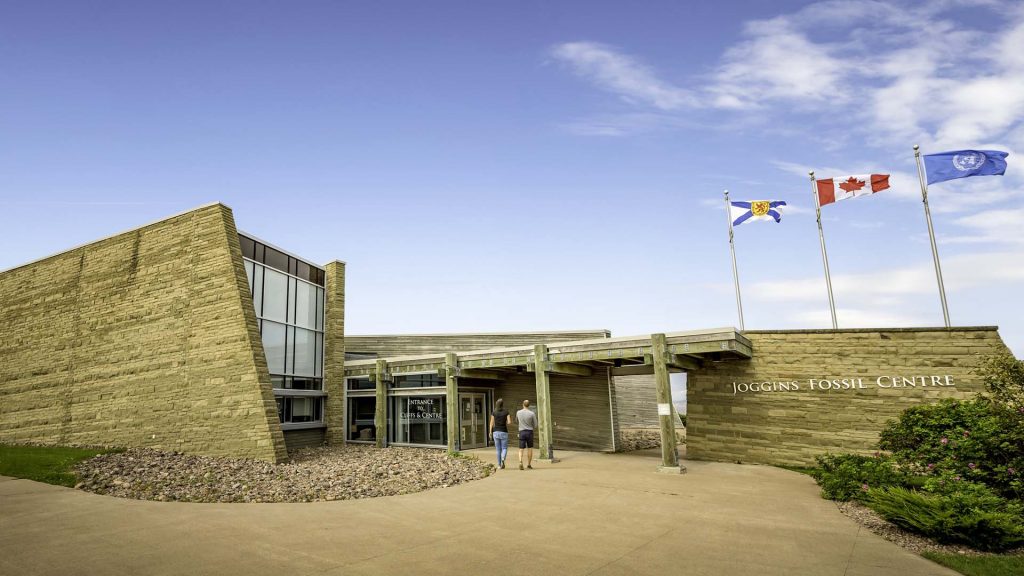
“Joggins Fossil Cliffs UNESCO World Heritage Site.” (Source: Tourism Nova Scotia)
Measurement
Sustainable Development Goals (SDGs) of the UNESCO 2030 Agenda that are implemented at the Joggins site include:
- SDG 4 – Quality Education
- SDG 11 – Make cities and human settlements inclusive, safe, resilient and sustainable
- SDG 12 – Ensure sustainable consumption and production patterns
This section focuses on the regulatory context for protection of the site:
The designated property consists of the 14.7 kilometres stretch of cliffs, but there are zoning regulations in place to protect the natural environment of the site and areas adjacent to the site. There is a buffer zone that starts from the cliffs to 20 metres landward. This zone is consistent with the eroding cliffs meaning that when the cliffs are set further landward due to natural erosion from the tides, the buffer zone will also move landward. Under the buffer zone that was established through the Municipality of the County of Cumberland Secondary Planning Strategy and Land Use Bylaw for the Joggins Planning Area (2006) through the Municipal Government Act (1998), there are two crucial policies for planning and land use. The “Cliffs and Shoreline Setbacks” policy restricts any future development and environmental effects caused by human activity in the buffer zone to ensure that the natural environment is protected, the natural erosion process is not tainted with, and that the views of the site have not been altered The policy for “Prohibited Uses and Structures” prohibits excavations and construction on the site and in the buffer zone for the same reasons as the first policy (Nomination of The Joggins Fossil Cliffs for the Inscription on the World Heritage List 15). Likewise, the Beaches Act and Regulations (1990) sets out zones where 100 feet starting from the cliffs are all activities regulated, enforced, and controlled. Furthermore, there is to be no development on the beach, removal or destruction of natural objects, and no vehicles on site unless granted permission (Kosters & Grey 16).
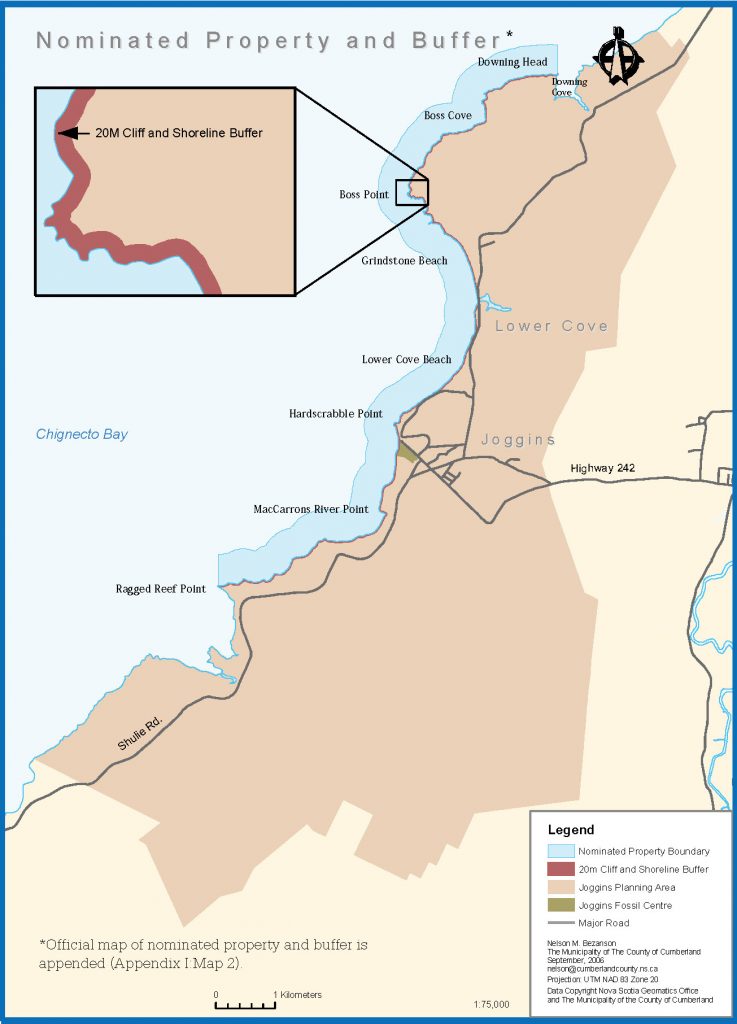
The Special Places Protection Act (SPPA) (1989) designated the site as a Special Place of Nova Scotia and this enables the protection and conservation of all heritage objects such as the fossils for the province and states that all the fossils belong to Nova Scotia (Nomination of The Joggins Fossil Cliffs for the Inscription on the World Heritage List 16). The Fossil Collecting Policy is a policy governed under the SPPA (1989) and the Beaches Act and Regulations that protects the fossils of Nova Scotia. The purpose of the policy if to preserve the any and all fossils found in the province for scientific research. The only way of collecting fossils must be done with a Heritage Research Permit that has to be granted by the Government of Nova Scotia, and these are rare (Joggins Fossil Institute & Cumberland Region Economic Development Association 23). In addition to this, the Collections Management Policy, also governed under the SPPA enforces that all collections from the Joggins Fossil Cliffs site must stay within the premises of the province (Joggins Fossil Institute & Cumberland Region Economic Development Association 24). These two policies governed under the acts and regulations put in place, help to ensure that all heritage objects are preserved, protected and regulated for the benefit of scientific research, the wellbeing of the province of Nova Scotia, and experience of the visitors of the site.
The closure of the last coal-mining operation in 1980 led to the Mineral Resource Act (1990) which is another act that aids in regulating human activity and human-inflicted environmental risks to the natural site. It establishes that all land within and next to the designated property prohibit mineral exploration for the purpose of protecting the view, lighting, healthy and safety, and traffic management of the area (Nomination of The Joggins Fossil Cliffs for the Inscription on the World Heritage List 87).
Works Cited
Booked/Book chapters/Journal articles
- Falcon-Lang, Howard J. “Earliest History of Coal Mining and Grindstone Quarrying at Joggins, Nova Scotia, and Its Implications for the Meaning of the Place Name ‘Joggins.’” Atlantic geology 45 (2009): 1–20.
- Falcon-Lang, Howard J., and John H. Calder. “UNESCO World Heritage and the Joggins Cliffs of Nova Scotia.” Geology Today, vol. 20, no. 4, Blackwell, 2004, pp. 139–43.
- Kosters, Elisabeth C., and Melissa Grey. “From Scratch: Building the Governance Structure of the Joggins Fossil Institute.” Geoheritage, vol. 13, no. 1, Springer Berlin Heidelberg, 2021, https://doi.org/10.1007/s12371-021-00531-5.
- Thurston, Harry. “Joggins Fossil Cliffs.” The Canadian Encyclopedia, Historica Canada, 3 September 2012. https://www.thecanadianencyclopedia.ca/en/article/joggins-fossil-cliffs.
Policies and reports
- Joggins Fossil Institute and Cumberland Region Economic Development Association. Joggins Fossil Cliffs Management Plan January 2007.
- Joggins Fossil Institute. 2020-2021 Annual Report, 2021.
- “Nomination of the Joggins Fossil Cliffs for Inscription on the World Heritage List.” January 2007.
- Government of Nova Scotia. Regulations – Special Places Protection – Joggins Fossil Cliffs Protected Site. Last modified 12 October 2017.
Websites
- Architecture49. Joggins Fossil Centre.
- Joggins Fossil Cliffs. “About the Property.”
- Joggins Fossil Cliffs. “UNESCO World Heritage status.”
- Joggins Fossil Cliffs. “Why the cliffs exist.”
- Canadian Architect. Fossil Jewels. 1 October 2008.
- Canadian Register of Historic Places. “Joggins Fossil Cliffs.”
- O’Neill, Scriven & Associates Limited. Joggins Visitor Centre.
- UNESCO World Heritage Centre. “Joggins Fossil Cliffs.”
Credit for banner image: Susan Ross, 2012.